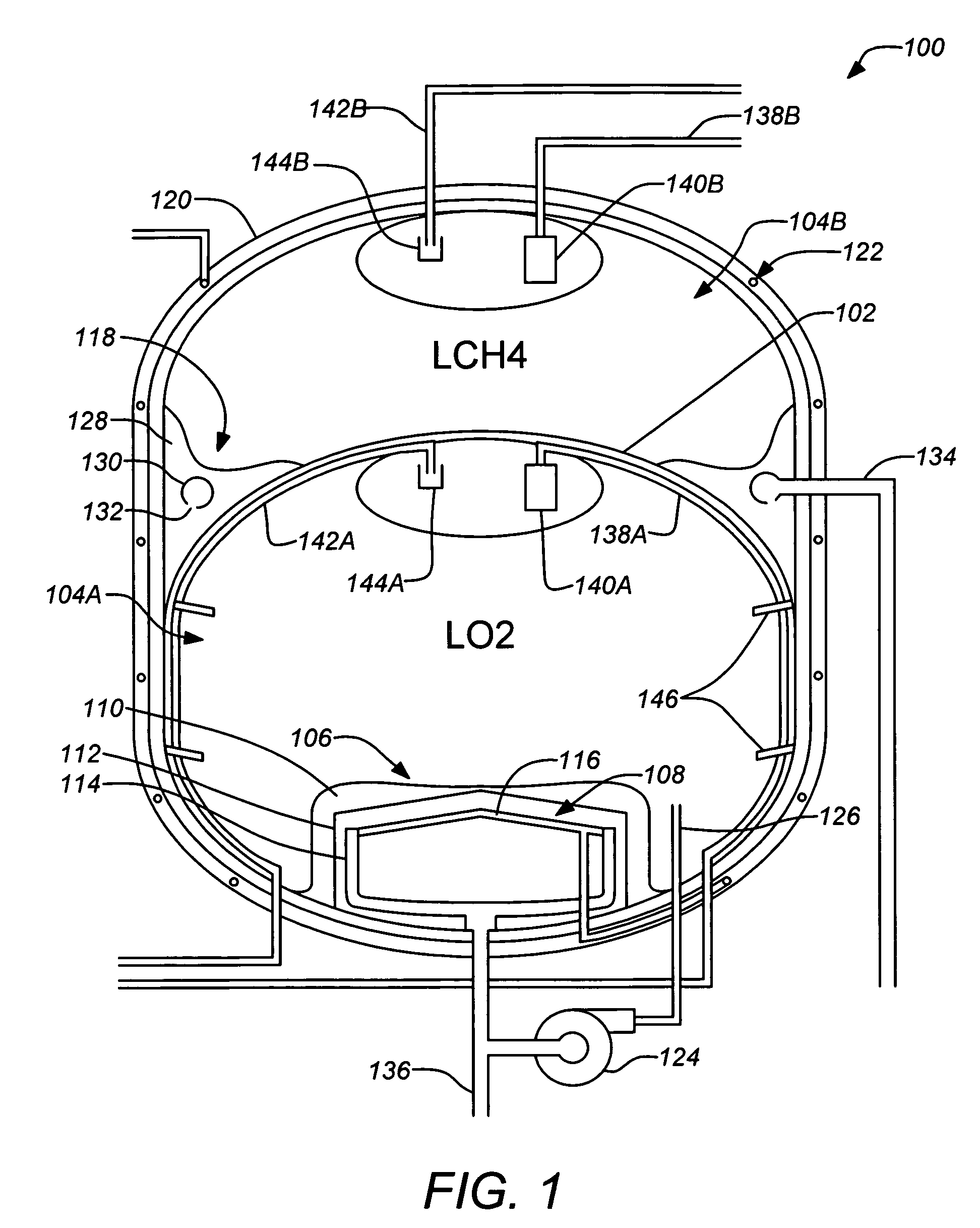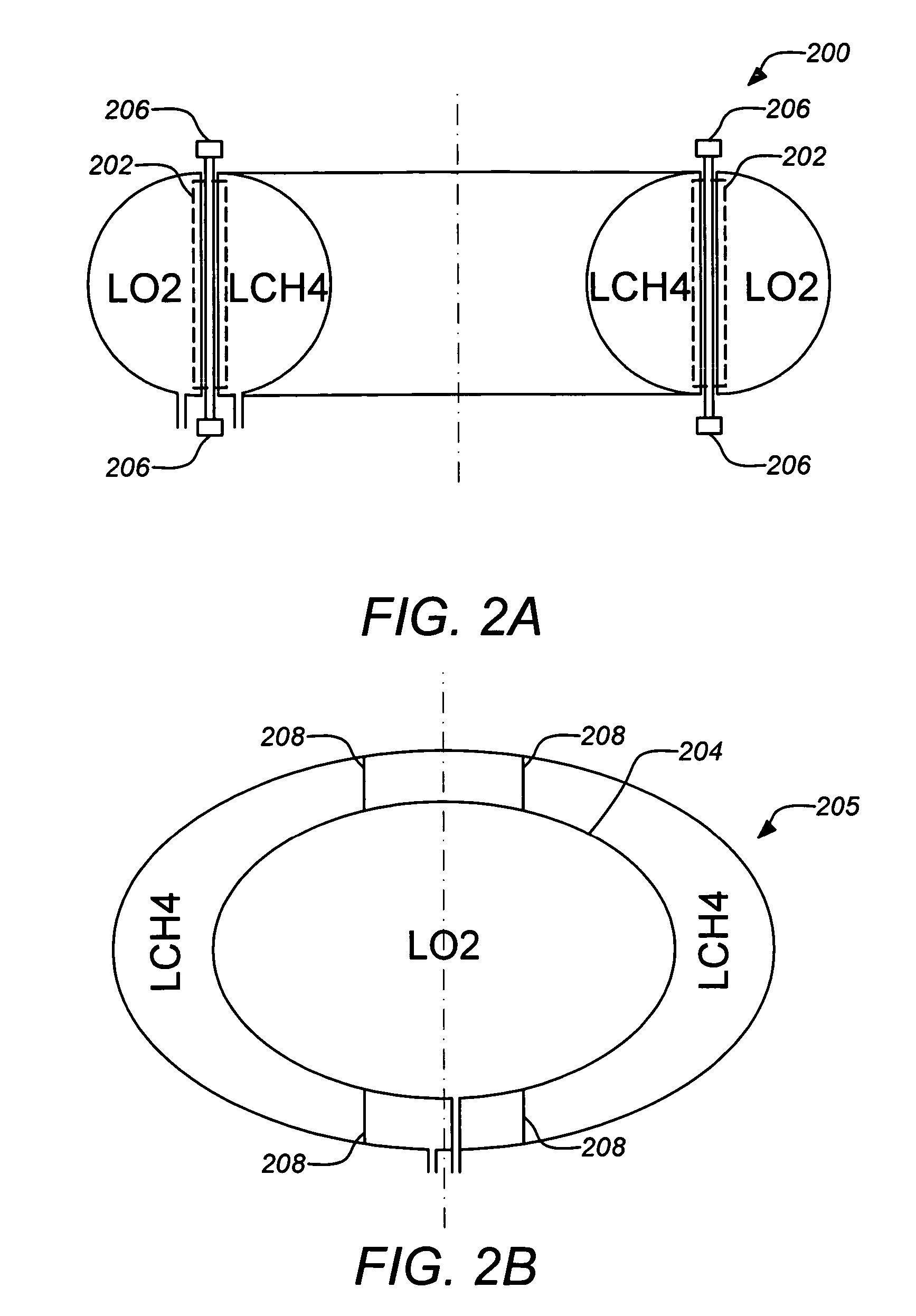Thermally coupled liquid oxygen and liquid methane storage vessel
a technology of liquid oxygen and methane storage vessels, which is applied in the direction of container discharging methods, vessel construction details, transportation and packaging, etc., can solve the problems of limiting the amount of heat flow into the tank, reducing the life of cryogenic liquid, and reducing the structure and system. , to achieve the effect of reducing the structure and system
- Summary
- Abstract
- Description
- Claims
- Application Information
AI Technical Summary
Benefits of technology
Problems solved by technology
Method used
Image
Examples
Embodiment Construction
[0034]1. Overview
[0035]LO2 and LCH4 have relatively similar boiling temperatures on Earth; oxygen boils at 162° R while methane boils at 201° R. At a temperature near 164° R both fluids can exist in liquid phase if they are stored in tanks with the appropriate pressures. This allows the fluids to be thermally coupled, and thus stored at the same temperature which leads to several benefits. Although the invention described herein may be discussed with reference to the combination of LO2 and LCH4, those skilled in the art will understand that embodiments of the invention may be more broadly applied to other bipropellant combinations, provided a substantially similar functional operating temperature can be determined for the proposed bipropellant.
[0036]In various embodiments of the invention a cryogenic propellant storage tank system and method are disclosed that thermally couple LO2 and LCH4 tanks together by using either a single tank compartmentalized by a common tank wall or two se...
PUM
 Login to View More
Login to View More Abstract
Description
Claims
Application Information
 Login to View More
Login to View More - R&D
- Intellectual Property
- Life Sciences
- Materials
- Tech Scout
- Unparalleled Data Quality
- Higher Quality Content
- 60% Fewer Hallucinations
Browse by: Latest US Patents, China's latest patents, Technical Efficacy Thesaurus, Application Domain, Technology Topic, Popular Technical Reports.
© 2025 PatSnap. All rights reserved.Legal|Privacy policy|Modern Slavery Act Transparency Statement|Sitemap|About US| Contact US: help@patsnap.com



